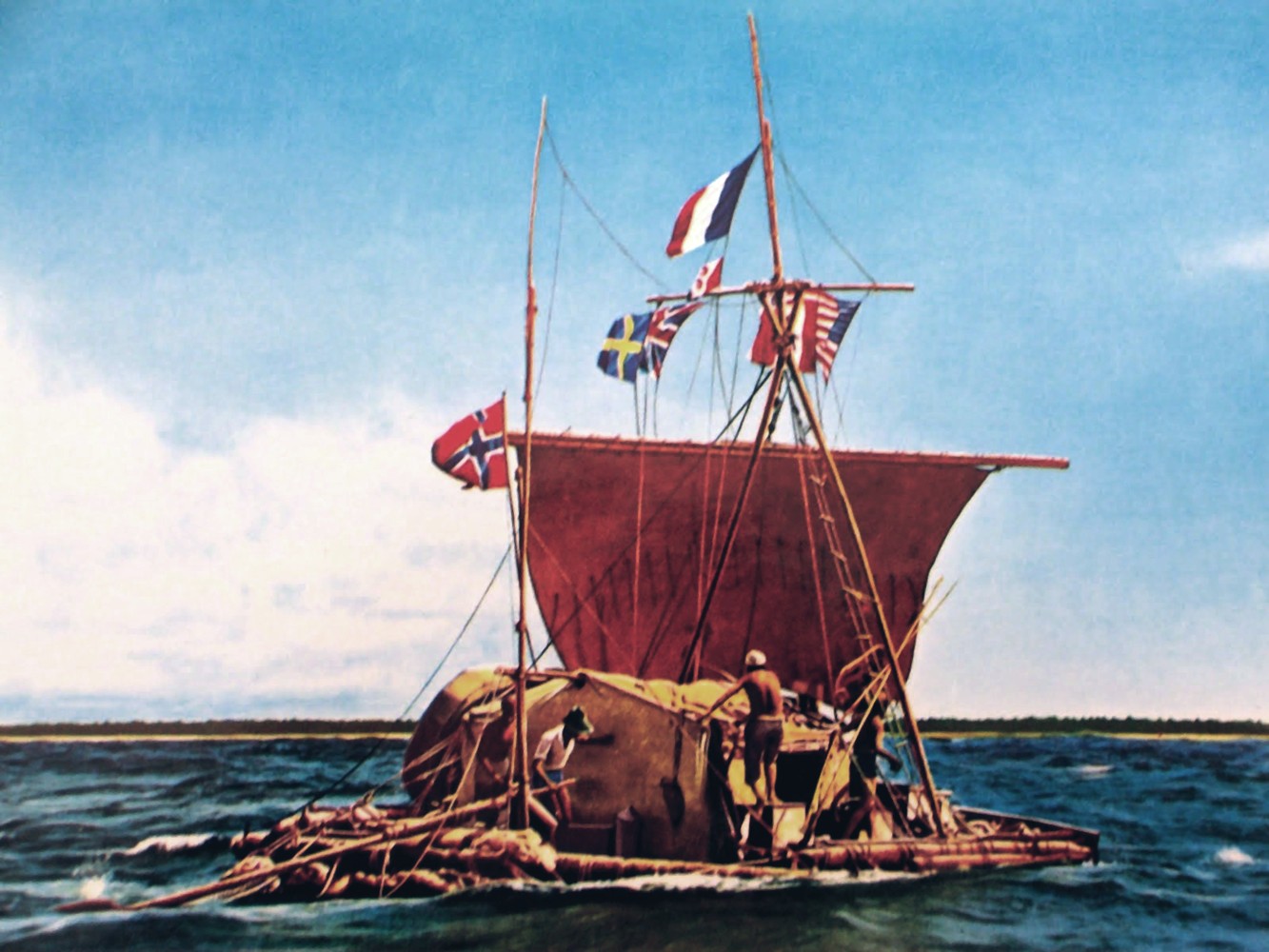Kon-Tiki

The Kon-Tiki raft in the Pacific Ocean, 1947.
The Kon-Tiki expedition was a 1947 journey by a wood-made raft across the Pacific Ocean from South America to the Polynesian islands, led by Norwegian explorer Thor Heyerdahl.
The raft was named Kon-Tiki after the Inca sun god, Viracocha, for whom "Kon-Tiki" was said to be an old name.
Heyerdahl believed that people from South America could have settled Polynesia in ancient times. He wanted to show that, by using only the materials and available to those people at the time, that it was, at least, possible. The whole idea was to show that a simple raft could make the journey across an immense ocean.
The raft was made out of balsa logs and other materials in a style drawn by Spanish conquistadors. The main body of the float was composed of nine balsa tree trunks up to 14m (45ft) long, 60cm (2ft) in diameter, lashed together with hemp ropes. Cross-pieces of balsa logs were lashed across the logs to give lateral support. Pine splashboards were fitted to the bow, and lengths of pine were wedged between the balsa logs.
The main mast was made of mangrove wood lashed together to form an A-frame 9m (29ft) high. Behind the main-mast was a cabin of plaited bamboo roofed with banana leaf thatch. At the stern was a 6m (19ft) long steering oar of mangrove wood, with a blade of fir. The main sail was 4.6 by 5.5m (15 by 18ft). The raft was partially decked in split bamboo.
The trip, with a crew of six, began on April 28, 1947. They sailed for 101 days over 6,900km (4,300mi) across the Pacific Ocean before the reef was destroyed in the French Polynesian islands on August 7, 1947. Nevertheless, the crew made a successful landfall, and all returned safely.
The original Kon-Tiki raft is now on display in the Kon-Tiki Museum in Oslo.


